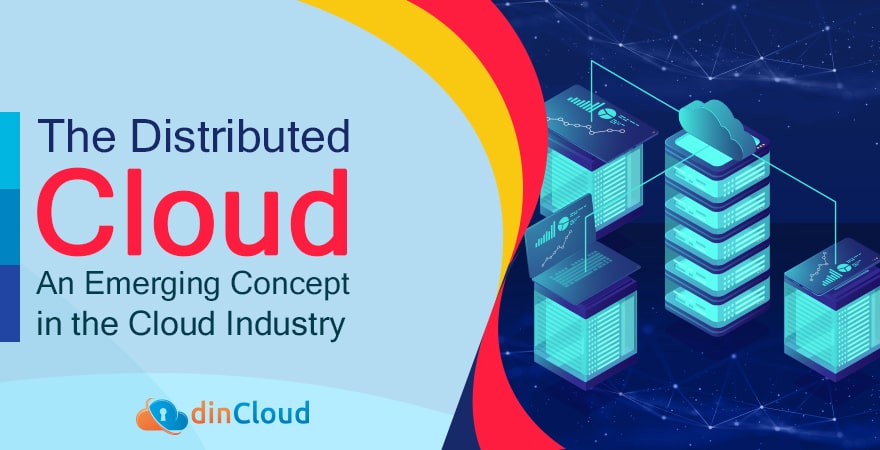One of the best things about the Cloud is that it is always evolving to suit new use cases and scenarios. The very flexibility of the Cloud is one of its main selling points, as the digital world around us is also changing quite rapidly.

Before we venture into the emerging concept of the distributed cloud, we need to draw a clear distinction between a distributed cloud environment and the hybrid cloud. On the surface, both might appear the same but they differ in a lot of ways.
Hybrid v/s Distributed Cloud
In a hybrid cloud environment, deploying enterprises are able to draw a clear line as to which workloads remain on premise, while which of the processes make their way to the public cloud. This divide is not only visible up-front, but also remains as such down the line.
So, to better elucidate the concept of a distributed cloud, a hybrid cloud environment does not allow you to “maneuver” workloads to and fro from your own data center to that of a Public Cloud Service Provider (CSP) like dinCloud.
How Does the Distributed Cloud Look Like?
As you may have inferred from the above discussion, the distributed cloud is a much more functional and flexible version of a hybrid cloud environment. In the case of a distributed cloud, you will be able to move workloads to the infrastructure that best suits you.
Now, the suitability of the public cloud or a private data center for any particular workload may not be a constant. So, the distributed cloud is highly suitable for scenarios where your preference for on-site or public cloud data centers will vary with time for a host of reasons.
However, a distributed cloud also comes with a caveat, and that is a much higher level of complexity. You will need to design processes and workloads in a way that they seamlessly run over both on-premise and cloud based data centers alike.
How to Leverage the Distributed Cloud?
Now that we have discussed the salient features of a distributed cloud, lets touch how you can leverage it to your utmost advantage.
It all boils down to resource optimization, whether its on premise or the public cloud. The distributed cloud gives you the opportunity to prioritize workloads over your on premise infrastructure, if it can amply handle the nature and scope of the workloads.
In case where certain workloads or processes are burdening your on-premise infrastructure and also negatively impacting the user experience (UX), you can immediately shift those workloads over to the public cloud provider’s infrastructure such as dinCloud.
Then, as soon as the load tapers down to become adequate for your own IT resources, you can shift that workload back to your own infrastructure. During this entire switch-over, you will need to ensure that the transition process is seamless.
You will also need to make sure that this to and fro movement of workloads does not impact the integrity of your data and the processes being managed as such. In that case, most of the advantages of the distributed cloud will fade away.
Lastly, a distributed cloud also helps a lot in the domain of meeting the ever increasing regulatory requirements. That way, you can tell regulators that you are tackling workloads involving sensitive information or data on premise, within your own data centers.
Conclusion
The distributed cloud is yet to take a tangible shape and become a mainstream trend. However, it has a few notable benefits to offer, provided you can tackle the complexity that comes along with such a cloud deployment model.
Why go for such a complex distributed cloud environment when you can avail secure, reliable and highly cost efficient cloud solutions by dinCloud? Our solutions carry no hidden costs and come with a Flat Rate Pricing Model.
Contact Us to Request a Demo or Get Your 14 Days Free Trial!


